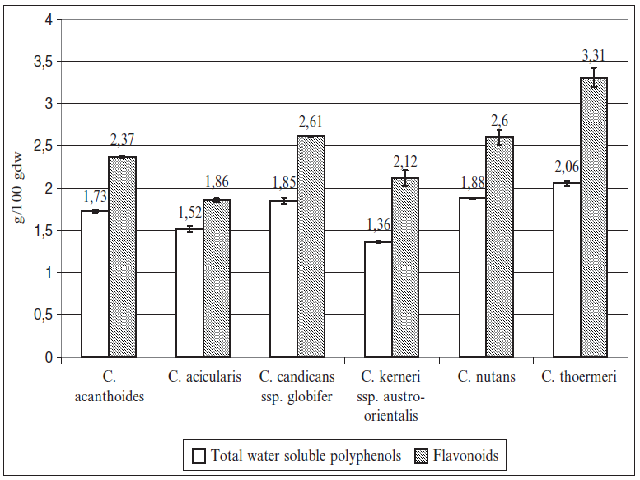Antioxidant Activity of Some Carduus Species Growing in Bulgaria
DOI:
https://doi.org/10.5530/ax.2011.4.4Keywords:
Radical scavenging, Antioxidant activity, Carduus, AsteraceaeAbstract
Background: Species of genus Carduus are traditionally used in Bulgarian folk medicine as diuretic, cardiotonic and antihemorroidal remedies. C. candicans ssp. globifer and C. kerneri ssp. austro-orientalis are Balkan endemic, whereas C. acanthoides, C. nutans, C. thoermeri C. are invasive alien weeds in the Americas, Australia and New Zealand, and causes major economic losses. The aim of the present study was to screen some Carduus spesies growing in Bulgaria for radical scavenging and inhibitition of lipid peroxidation in order to discover new natural sources of antioxidants for further investigation. Methods: Antioxidant activity of Carduus species were investigated using 1,1-diphenyl-2-picrylhydrazyl (DPPH) and 2,2′-azino-bis(3-ethylbenzothiazoline-6-sulfonic acid) di-ammonium salt (ABTS) free radicals; ferric reducing antioxidant power (FRAP) assay and inhibition of lipid peroxidation in linoleic acid system by the ferric thiocyanate method (FTC). Butylated hydroxytoluene (BHT) and ascorbic acid were used as positive controls. In addition, the quantification of total water soluble polyphenols and flavanoids were determinate by Folin-Chiocalteu reagent and AlCl3, respectively. Results: The highest concentrations of total water soluble polyphenols and flavonoids were found in C. thoermeri (2.06 ± 0.03 g /100 g dw and 3.31 ± 0.12 g /100 g dw, respectively), followed by C. nutans (1.88 ± 0.01 g/100 g dw; 2.60 ± 0.09 g /100 g dw, respectively) and C. candicans ssp. globifer (1.85 ± 0.04 g/100 g dw). Conclusions: All tested extracts demonstrate significant antioxidant activity moreover C. thoermeri, C. nutans and C. candicans ssp. globifer were found to be the most potent and can be a good new source of natural antioxidants.
Downloads
Metrics





